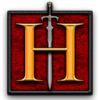Hello,
I was wondering, what are the pros and cons of the various tile formats.
Squares
+ as easy as it gets
+ simple movement
+ both horizontal and vertical movement as well as diagonal movement can be a straight line
- looks sometimes squarish
- diagonal movement is not the same as horizontal or vertical
Hextiles
+ often look better than squares (maybe a bit subjective)
+ movement to any neighbour is always the same distance
- movement is more complicated than on a grid of squares
- on some situations picking can also be more complicated
- more possible combinations required because a tile can have up to 6 instead of 4 different tiles (materials/ground) as neighbours
- vertical or horizontal movement can be a straight line, but not both
Triangles
+ less combinations, only three neighbours
+ movement to any neighbour is always the same distance
- movement can be a bit more strange than on a grid of squares, same with picking
- vertical or horizontal movement can be a straight line, but not both
- on some situations picking can also be more complicated
- never seen it in use, only for hextile games as subtiles
One thing I'm especially interested in is why people choose hextiles over triangles?
Is it just easier for the artists or is there another reason?
In my eyes triangles do have the same cons as triangles, however tringles can have at most three different neighbours which means the artists wouldn't have to make as many combinations as with hextiles.
Do you know of any examples that used triangular tiles (excluding the triangles used for actual rendering)?






